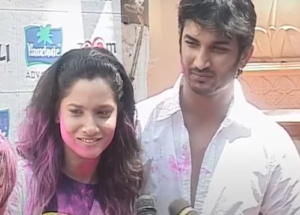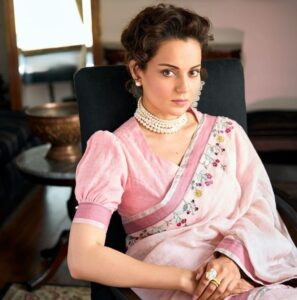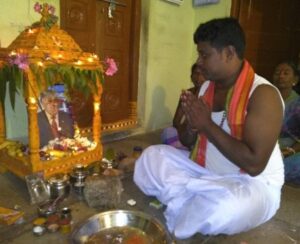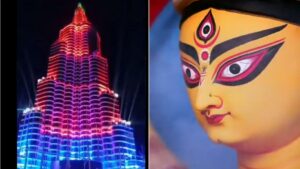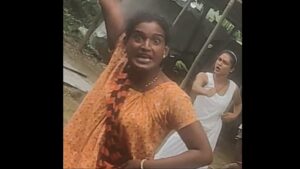The festival of Onam is a ten day harvest festival believed to welcome the mythological legendary King – Mahabali. The festival marks its grandness with various cultural practices which is a treat to watch during the festive season.
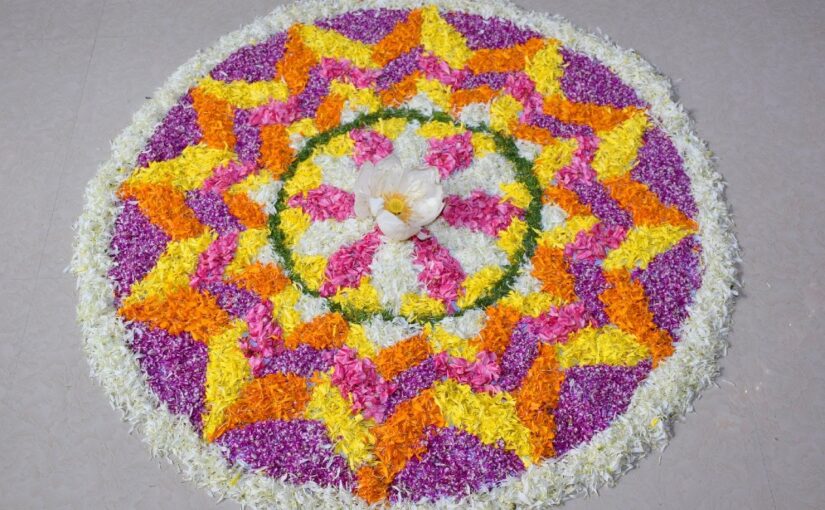
Onam Flower Decoration. (Pixabay)
Onam is a South Indian festival celebrated in the state of Kerala. It is a annual harvest festival which falls on the 22nd Nakshatra Tiruvonam in the Malayalee Calendar in the month of Chingam and as per the Gregorian calendar, it falls in the months of August – September. This year it starts from August 22nd and ends on 31st August.
Significance
Onam is a harvest festival and is predominantly centered around the culture associated with richness and grandeur of food style (Generally called Onam Sadhya) to commemorate the visit of the spirit of the benevolent king, Mahabali.
The Legend of Mahabali
It is believed that Onam is celebrated to welcome the visit of the spirit of Mahabali, though a legendary king of demonic descent is hailed a benevolent ruler of Kerala who had to sacrifice himself to Lord Vishnu who sought three feet of land. According to the legend, Mahabali, who has a demonic descent was the great great grandson of Maharshi Kashyap and great grandson of the Vishnu Devotee, Prahalada.
Mahabali, who was the grandson of Prahalada won over the Devas (Gods) and terrorized them. The devas had gone to Lord Vishnu to seek his help. However, initially Vishnu had denied help as Mahabali was a benevolent king and his firm devotee. Upon the victory over Devas, Mahabali performs a Yajna (a home sacrifice ritual) which is to offer anyone anything of their choice.
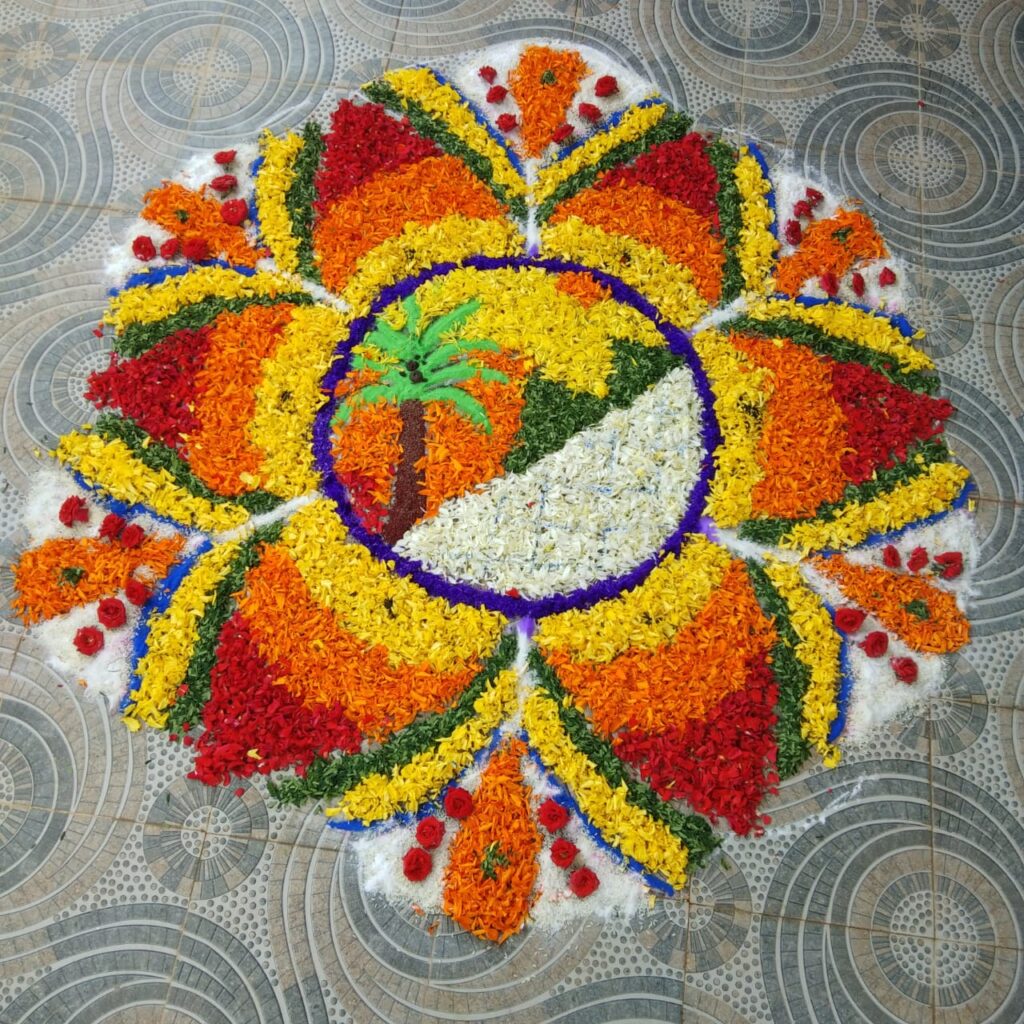
Vishnu comes to Bali in an incarnation of Vamana (a dwarf monk) and sought for his desired offerings from the king. Mahabali volunteered to offer him anything of his choice – horses, gold, cows, villages etc. However, Vamana only requested three foot of land and he said that one should desire whatever he could get.
Mahabali agreed and soon Vamana grew into an enormous huge form and covered everything Mahabali possessed within two feet and when asked for the third step, Bali, realizing his pride, humbly offers his own head to step on as the final offer. Pleased by Mahabali’s devotion, Lord Vishnu offers him a boon that he could visit his loving subjects and glorious kingdom once a year.
Most Read: Boris Johnson’s UK Government Accused Of Threatening People To Get Back To Work
Celebration and Rituals
Onam is a ten day festive celebration which starts on the day called Atham and ends with Chathayam. Celebrations starts with the official cultural festive rituals starting off at Trikakara Temple, Kochi. The temple is considered as the abode of Mahabali and celebration begins with the raising of the festive flag.
Each day has a lot of festive activities filled in with to add the cultural semblance and grandeur to the celebration with cultural activities such as Athachamayam (A grand parade associated with royals of Kochi, now a state sponsored program with elephants marching with Chendamelam (Kerala drum beats and music) with folk dances and arts floats displayed with scenes from Ramayana and Mahabharatha with also scenes from Bible included heralding the cultural confluence and unity of celebration across all religions in the state.
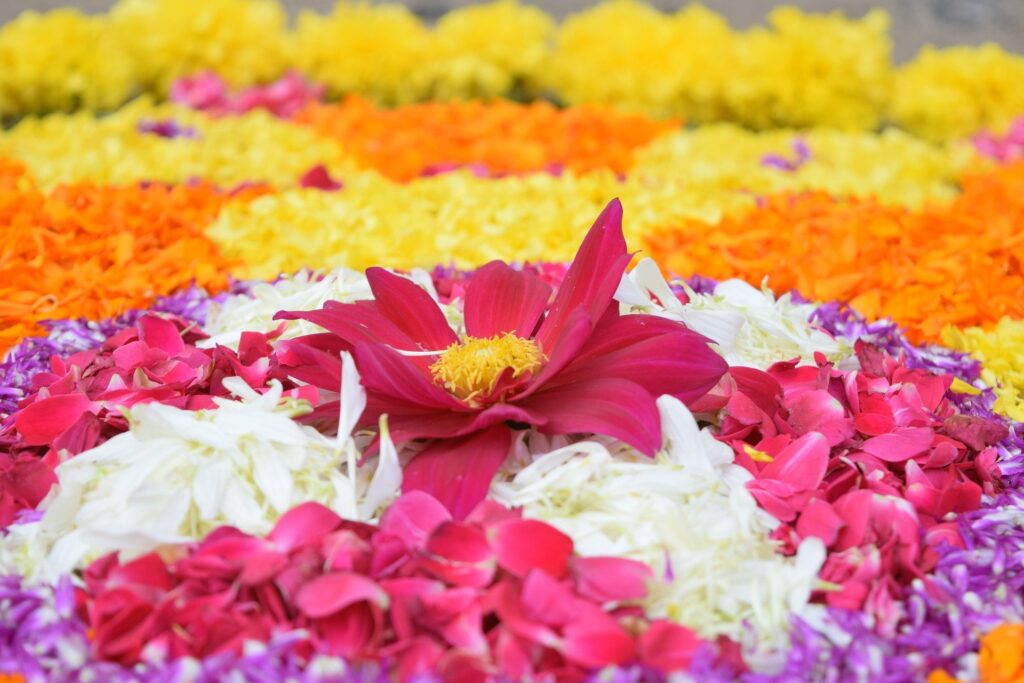
Pookalam (Flower Rangoli) and Maveli
The Pookalam or flower rangoli is the main attraction in front of every malayali house during the festival. It is made up of gathered bloosoms of various flowers garnished on cow dung bed with different patterns of floral design and is a treat to watch. Generally, the women in the house accomplish this décor with their skillful artistic spirits.
The Maveli or Onathappan is the embodiment of King Mahabali made out of clay with flowers attached to it with sticks pierced into the clay statues and is placed in the middle of flower Rangoli. People perform Pooja to the statue on all the days until the festival ends.
Tiruvathirakali
Tiruvathirakali is one of the dance forms which is a major attraction during the festival. It is an all women dance which is performed around a large lamp called Nilavilakku wearing traditional Kerala saree and dancing to traditional song and music.
Kathalaki
Kathakali, a highly energetic dramatic narrative dance form is also performed during the festival with recitation of mythological stories and sequences and is a treat to watch.
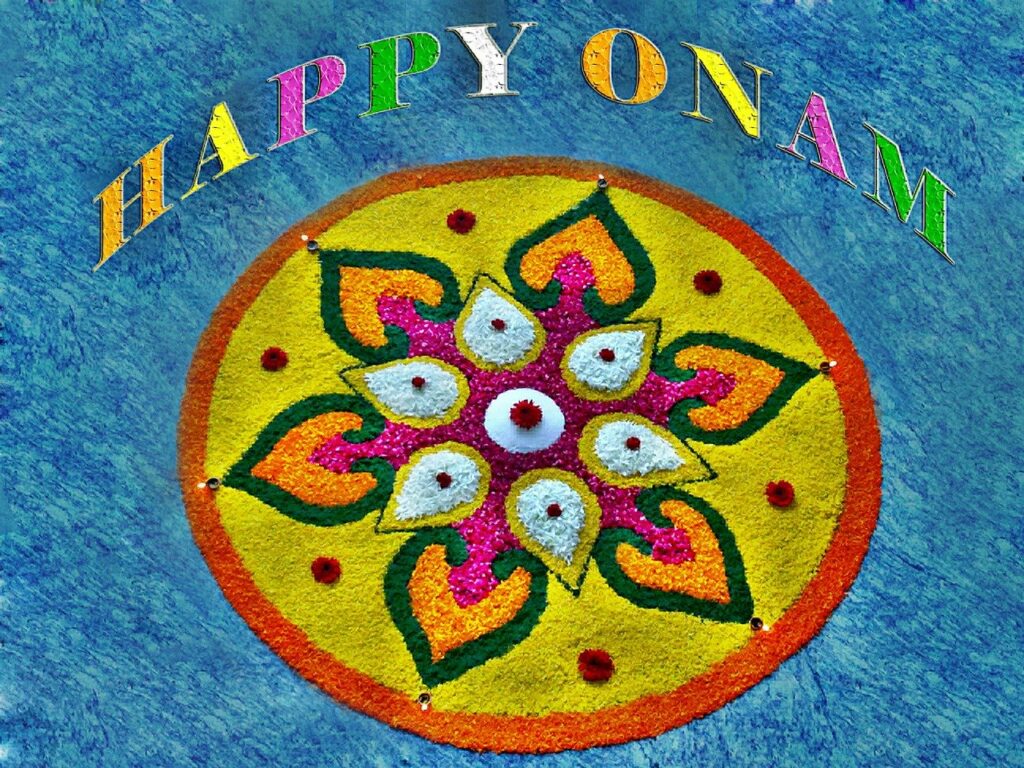
Pulikali or Tiger Dance
Predominantly performed in the district of Thrissur, Pulikali or the tiger dance is a major attraction with people painted in bright yellow or red or orange base with black stripes across resembling the looks of tiger are seen dancing to the drum beats such as chendamelam and is a major cultural attraction during the festival.
Vallamkali or Boat Race
The snake boat race, traditionally held on River Pampa is a major attraction during the festival with hundreds of oarsmen sail a snake shaped long boats with the competitive spirit and is a major cultural attraction during the festive season and is covered and telecasted for people to watch across the world.
Food and Cusinie – The Onam Sadhya
The Onam sadhya is an indispensable part of Tiruvonam and every keralite weigh their pride and happiness either organizing or attending one. Generally served on a plantain leaves and generally consist of nine courses. The dishes are made of seasonal vegetables such as yam, cucumber, ash guard etc.
The dishes may vary either from nine to dozens of varieties however the predominant dishes featured are Chips (Banana Chips) Sarkarupperi (Fried banana coated with jagerry ) Injipuli (Ginger based soup with sweetness of jaggery) Avvial (a vegetable curry with a buttermilk base) Payasam and sambhar along with Kerala pappads. There are also other side dishes made like Thoran, Kalan, Olan, kootukari etc but it dependes on regional preferences.
The season ends with Avittom and Chathayam where people prepare the space for their belowed king, Mahabali to return to the heavens with removing the onathappan or maveli and immerse in the nearby river or sea and removing all the floral designs.


